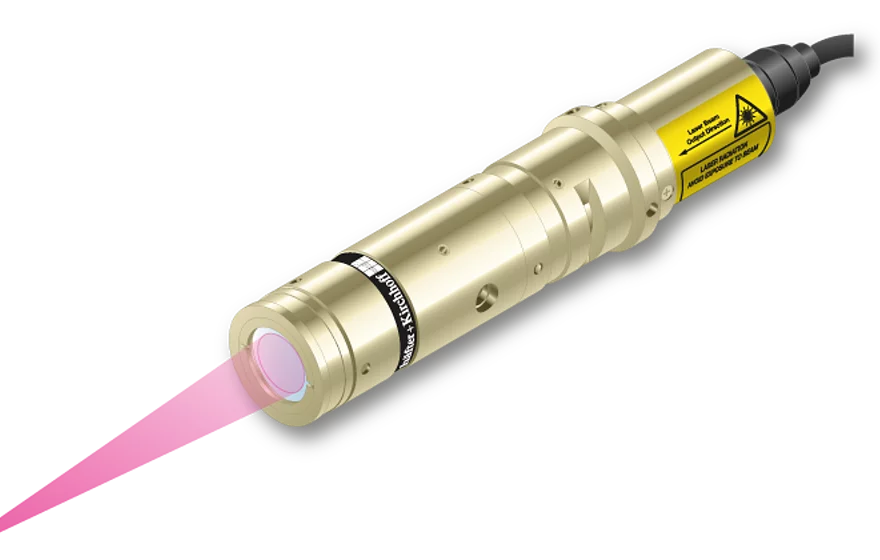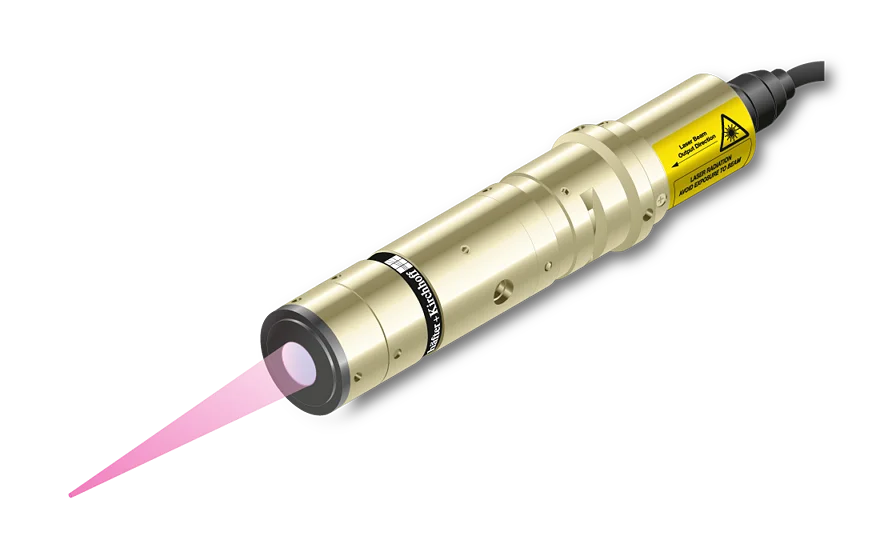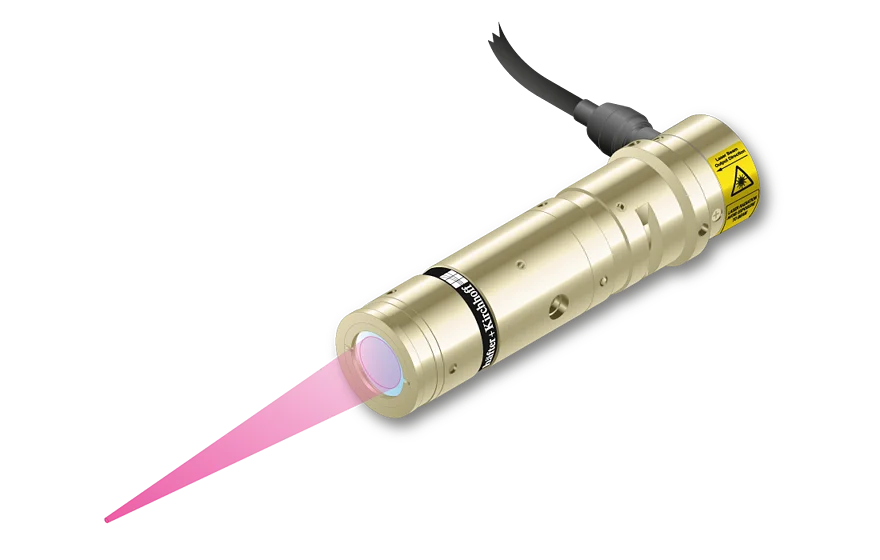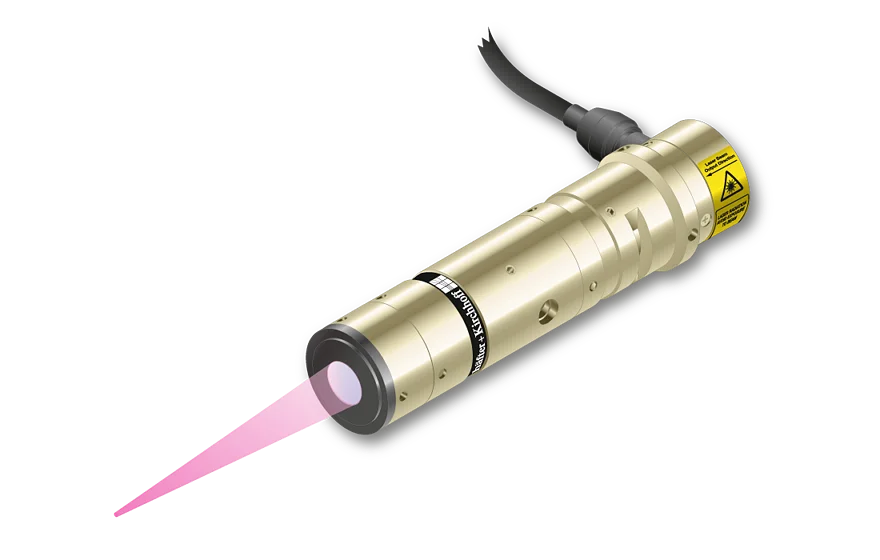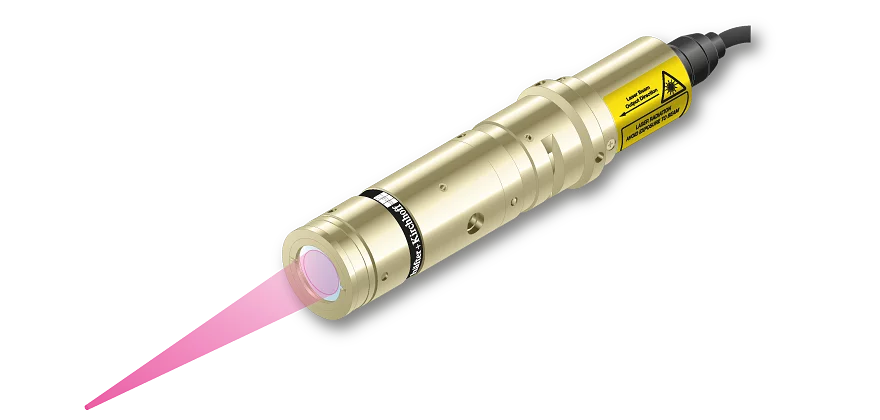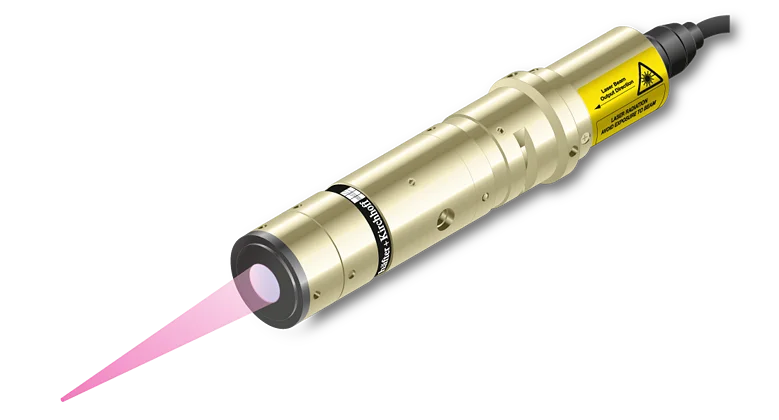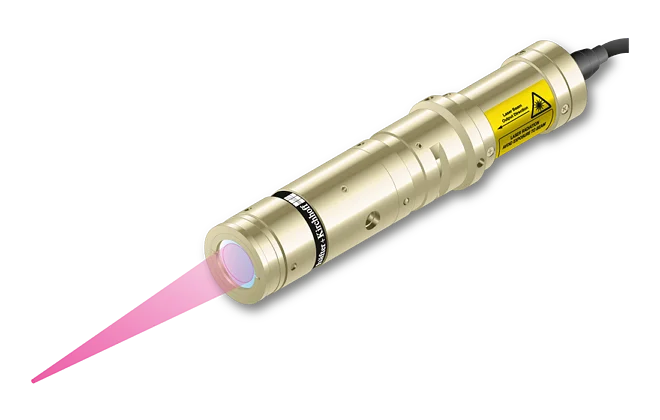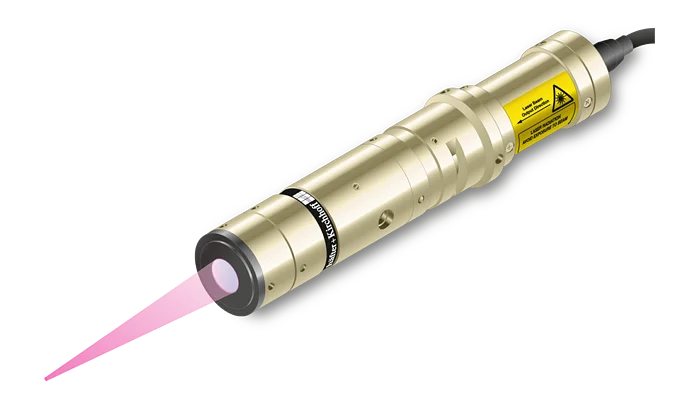The laser diode beam sources series 13MC/13MMC produce a rotationally symmetric, Gaussian laser spot.
13MC/13MMC
The laser diode beam source series 13MC produces a rotationally symmetric, circular laser spot with Gaussian intensity distribution. The corresponding series 13MMC produces a rotationally symmetric laser spot with extended depth of focus. The beam profile is rotationally symmetric and approx. Gaussian.
Micro and Macro lasers
The lasers of series 13MC are Laser Micro Focus Generators designed to produce spots with small spot size. They have a small depth of focus (in this case the depth of focus is the Rayleigh range). Laser Macro Focus Generators like the corresponding lasers of series 13MMC have common basic optical features but are designed to generate laser spots with an extended depth of focus.
Electronics
The lasers have integrated electronics for control of the laser output power. The output power can be controlled using the modulation input ports (TTL and analog) or manually using the potentiometer. Optionally the lasers can be equipped with RS232 serial interface for laser control and data read-out.
Adjusting the working distance
For lasers of series 13MC/13MMC the working distance can be adjusted by adjusting the focus setting. Please note that the spot diameter increases proportionally to the working distance. A fine-adjustment of the distance between laser and target is recommended for fine-focusing in order to achieve minimal spot size.
Optional: Low Noise Version
The laser series 13MC/13MMC is also available as a Low Noise version LNC-13MC (Micro), LNC-13MMC (Macro). These lasers are low noise (typ. < 0.15% of Po (RMS, Bandwidth < 1 MHz)) and operate mode-hopping free. Due to the reduced coherence length the speckle contrast is lowered. However this effect is smaller for smaller lines and spots. (Po is the maximum specified output power.)
These high quality lasers can e.g. be used for machine vision applications.
